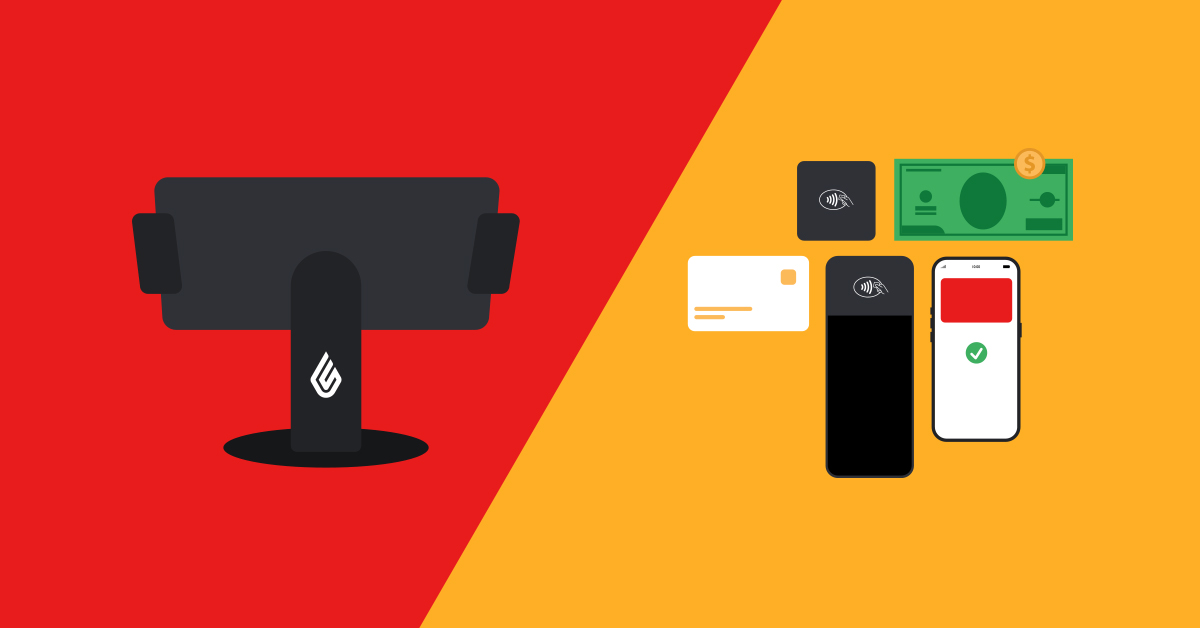
If you’re an independent entrepreneur with an eCommerce business or online store, you’ve probably participated in some aspect of digital marketing. Maybe you’ve posted about your products on social media. Or sent a welcome email to your customers. Or maybe you’ve even purchased an ad through Google. If so, you’ve already been working in the world of digital marketing, even if you weren’t directly aware of it as a concept.
To put it simply, digital marketing is any form of advertising done through digital channels like email, social media, search engines, and websites. Anything that you do online—or even by text message—that helps connect customers to your product or business is digital marketing.
If you’re interested in learning more about digital marketing and how it can help grow your business, keep reading! We’re about to dive into some of the fundamentals of digital marketing, different types of digital marketing, and some important notes about creating a thoughtful digital marketing strategy.
Check out our downloadable resource, jam-packed with ways to strategize for future growth.Future proof your business with our retail guide for 2022
Some digital marketing fundamentals
If you’re wondering if a digital marketing strategy is even necessary for your business, this statistic might sway you: the Pew Research Center found that 85% of adults in the United States are online daily and 31 percent report being “online constantly.” If you run an eCommerce business, you likely know all about the opportunities present in the digital space, and digital marketing can allow you to connect with nearly all adults across North America, along with potential customers around the world.
A key difference between traditional and digital marketing is that customers can’t interact with a billboard or print ad in the same way that they can interact with an email, an Instagram post, or a clickable ad. Digital marketing creates opportunities for connection and conversation between you and your potential customers. This is so important in today’s world, where people are spending more time in front of screens than ever before. Effective digital marketing strategies will entice customers into clicking—thereby diverting them off the digital highway and directly into your store.
Types of digital marketing
As a small business, your digital marketing strategy might include multiple platforms, or you might choose to focus all your efforts onto one platform. Like the ever-shifting trends of the internet, your digital marketing efforts should shift with the times and with the needs of your eCommerce business. If you’ve just started your business, it might make more sense to place an emphasis on building a customer base through social media marketing. Once you have a following of loyal customers, you might think about keeping them engaged through email marketing.
Below, we’ve compiled a list of some of the most common forms of digital marketing, which you can mix and match to build the perfect digital marketing strategy.
Search Engine Optimization (SEO), while not strictly a type of digital marketing, SEO is an important tool for your other digital marketing strategies. SEO is the process of making your website appear as early as possible in the list of results populated by a web search.
To do this, you’ll need to research which keywords are popular in your business area. For example, an eCommerce business selling art should be sure to include key terms like “wall art” and “unique art.” By filling your site with those key terms, you’ll appear more often in search results and attract more visitors.
Social Media Marketing is one of the most used methods of digital marketing. Facebook, Twitter, and Instagram are the most popular social media platforms. Creating an account on social media for your eCommerce business is a great way to establish the identity of your brand, sell specific products, and drive traffic to your website.
If you don’t have the capacity or need to establish social media accounts, you can still use social media marketing by creating an advertisement and putting it on the screens of various targeted demographics.
Email Marketing, as the name suggests, is marketing done via email. Though social media marketing has become ubiquitous, email marketing is still one of the most effective ways to gain and keep customers. That said, social media and email should be conspirators rather than competitors. Your social media accounts and advertisements can encourage customers to sign up to receive marketing emails. Once they’ve done that, you can email personalized deals, product information, and any other promotional material.
Content Marketing includes creating blogs, newsletters, informational videos, social media posts, and more that seek to provide your customers with helpful information, entertainment, or another valued experience. As opposed to an ad which highlights the key features of your product or brand, content marketing creates a connection between you and a customer that is closer to a partnership—ideally one in which you are providing information and helpful tools, rather than just trying to make a sale. While tricky to pull off correctly, content marketing can go a long way towards endearing a customer to your business.
Search Engine Marketing refers to customers reaching your website by clicking on it as part of the results of a search engine query. Here, SEO is key, as potential customers are not likely to look past the first page of results. Aside from SEO, you can also pay to have your website appear as a sponsored or advertised link at the top of a list of search results.
Pay-Per-Click is a form of digital marketing in which you only pay for an ad when someone clicks on it. Your pay-per-click ad could be on a search engine results page, on social media, or on another site frequented by a customer-base you’d like to engage.
Affiliate Marketing includes partnering with individuals outside of your business who can promote your brand or products for you. These promotions could take the form of social media posts, blog write-ups, or pathways from another business’ site to yours.
Crafting a digital marketing strategy
As we’ve said above, digital marketing comes in a variety of forms, and different aspects can be leveraged by businesses at any stage of growth and with any size budget. The key to digital marketing is deciding which avenues will be most effective for your business.
A basic digital marketing strategy for a business lacking a large marketing budget might include the lowest cost marketing methods, such as social media and blogs. Social media profiles are free to create, and the sky’s the limit no matter the size of your business. Establishing an account with great images and a strong sense of your business’ brand can quickly lead to a sizable online following.
Once you have followers, you can implement low-cost content marketing strategies. Publishing blog posts on your website and sharing them with your social media following is a great way to build interest in your brand and drive traffic to your website.
As your business and digital marketing budget grow, focus can shift to search engine advertising and paid advertisement on social media. With a larger audience, email marketing also becomes more important, and it can be helpful to purchase an email marketing service like MailChimp or Constant Contact to automate your email marketing processes (or to search to see if your current platform offers such services, whether in-house or through an affiliate).
If you aren’t sure how best to approach establishing your own digital marketing strategy, it never hurts to study the competition. Take a look at other businesses who are operating in your market. Which strategies are they using? By placing yourself in the role of the customer, you can see if your competitors are utilizing digital marketing tools or platforms that you might be neglecting and see which methods of advertising are most likely to catch your attention.
Finally, don’t forget to study your own metrics. As you implement various digital marketing strategies, you’ll begin to receive valuable information about what’s working and what isn’t. Are most customers reaching your site through a search engine result? On which platform are your pay-per-click advertisements getting the most interaction? What types of social media posts get the most likes? By engaging with this data, you’ll be able to tweak your digital marketing strategy and ensure that you are focusing your efforts on only the types of digital marketing that perform the best.
Digital marketing services
It’s easy to feel overwhelmed by the possibilities and challenges present in the world of digital marketing. Creating a product and managing your business is hard enough without developing your own digital marketing campaigns. If you feel like you’d rather hire someone to manage this aspect of your business, you aren’t alone, and there are many digital marketing services out there who would be glad to help you achieve your goals.
If this is the route you choose to take, be sure to research previous successes of the service you’re interested in and industry-standard rates for the kind of marketing your business needs.
We’re here to help
If you’re looking for a platform that can host your business and seamlessly link your digital marketing efforts together, Lightspeed may be able to help. As a one-stop commerce solution, we’re igniting businesses everywhere with products that range from POS to omnichannel eCommerce and beyond. We have a robust series of resources to help aspiring entrepreneurs out at every step of the way. If you’d like to speak to someone about how Lightspeed might revolutionize your business, simply click here.

News you care about. Tips you can use.
Everything your business needs to grow, delivered straight to your inbox.


